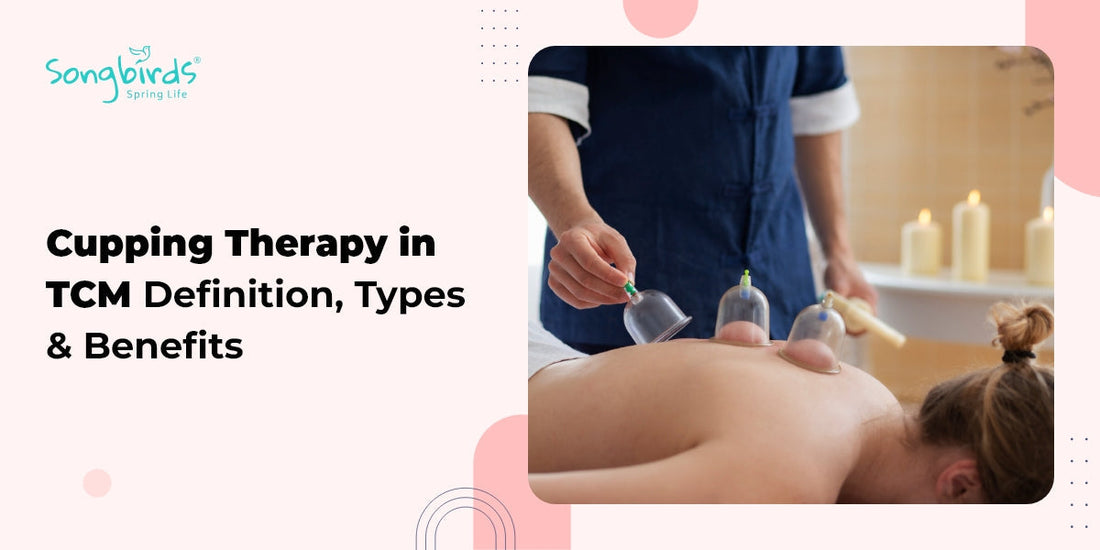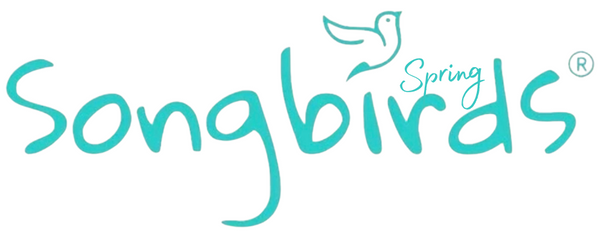
Cupping Therapy in TCM: Definition, Types & Benefits
Share
What Is Cupping Therapy in TCM?
Cupping therapy in TCM is an ancient practice. A therapist places small cups on the skin and creates suction. This action pulls blood toward the surface and stimulates circulation in muscles and tissues. The cupping therapy definition in Traditional Chinese Medicine is not limited to the body. Practitioners also see it as a method to restore the movement of qi, the life energy that keeps the body in balance.
When energy and blood slow down, pain or illness may appear. By applying cups on the skin, the therapist helps release these blockages. The suction supports the flow of qi along meridians, which link different organs and systems.
The history of cupping reaches back thousands of years. People in Egypt, China, and the Middle East used it for healing. The Ebers Papyrus of 1550 B.C. describes cupping for fever and pain. In China, it later became linked to acupuncture and turned into a key part of traditional medicine.
So, what does cupping do in TCM healing? It boosts circulation, clears stagnation, and activates the body’s natural recovery. Many patients report less pain, reduced swelling, and a greater sense of well-being after treatment.
History of Cupping in TCM and Other Cultures
The history of cupping in TCM and other traditions goes back thousands of years. One of the oldest references is found in the Ebers Papyrus from 1550 B.C., which described cupping as a treatment for pain, fever, and other conditions. In classical Chinese texts, cupping appeared as a method to move qi and restore balance in the body.
Over time, the tools changed. Early healers used animal horns to draw out fluids. Later, bamboo and ceramic cups became common. In modern practice, glass and silicone cups replaced them, making the therapy safer and easier to use.
Cupping also became important in Islamic medicine. The practice, known as Hijama cupping, was strongly recommended in religious tradition. Muslim scholars refined the method and helped spread it across Asia and Europe.
From Asia and the Middle East, cupping moved to Europe and later America. By the 18th and 19th centuries, it was widely used in Western medicine. While interest declined for a time, the therapy never disappeared. Today, it has returned as part of Traditional Chinese Medicine and global wellness practices.
Types of Cupping Therapy Explained
Cupping is not a single technique. Over time, different methods developed to suit health needs and cultural practices. The main types of cupping therapy include both traditional and modern styles.
- Dry cupping: A therapist places cups on the skin and creates suction without cutting the skin. The suction lifts tissues and improves circulation in the treated area.
- Wet cupping: This method combines suction with small cuts on the skin. The process draws out a small amount of blood, which many traditions link to detox and cleansing.
- Fire cupping: Practitioners heat the inside of glass cups and quickly place them on the skin. As the air cools, a vacuum forms and creates strong suction.
- Sliding cupping: The therapist applies oil on the skin and then moves the cups along muscles. This feels like a massage and helps ease stiffness.
- Flash cupping: The cups are placed and removed quickly in repeated cycles. This stimulates circulation across a wider area without leaving the cups on for long.
- Suction cup therapy: Modern practice often uses plastic cups with a pump instead of fire. This method allows better control of pressure and is common in clinics today.
- Regional variations: In some countries, people speak of the benefits of ventosa cupping, especially in Filipino wellness practices. In other areas, back suction therapy is used mainly for back pain and muscle tension.
These different methods show the range of approaches in cupping. Each technique has its own purpose, but all aim to improve circulation and support the body’s healing process.

Cupping Therapy Benefits in TCM
People turn to cupping for many reasons. In Traditional Chinese Medicine, the method is valued for its ability to ease pain, improve circulation, and restore balance. The main cupping therapy benefits include the following:
- Pain relief: Cupping is often used for back pain, neck stiffness, knee pain, and arthritis. Some patients also report relief from migraines and other tension-related headaches. The suction reduces tightness in muscles and increases blood flow to painful areas.
- Skin health: Practitioners use cupping for acne, eczema, and other skin issues. By improving circulation, the therapy supports healing in the skin and reduces inflammation.
- Stress reduction and relaxation: Many people describe cupping sessions as calming. The process lowers muscle tension, eases fatigue, and promotes a sense of relaxation.
- Respiratory support: In TCM, cupping is used to ease asthma, allergies, and bronchial congestion. By stimulating blood flow, it helps clear the chest and improve breathing.
- Immune system balance: Cupping is believed to support qi flow, which strengthens natural defense against illness. Improved circulation may also help the body fight infections and recover faster.
Studies on cupping are limited, but some reviews suggest positive results. Research reports that cupping may help manage chronic pain, reduce inflammation, and improve quality of life for certain patients. While more high-quality studies are needed, many people continue to use it as a safe, supportive therapy within TCM.
Cupping Therapy Points and Application
Cupping is most often applied on the back, shoulders, and legs. These areas have large muscles and respond well to suction. Cups placed here release stiffness, reduce pain, and improve circulation.
In TCM, cupping therapy points are chosen based on the meridian system. Meridians are energy pathways that connect organs and body functions. When a point along a meridian is blocked, the body may show signs of illness or weakness. By applying cups on these points, practitioners aim to restore the flow of qi and balance the system.
The choice of points depends on the condition being treated. For example, back pain may call for cups along the bladder meridian, while chest congestion may require cups on the upper back near the lungs. For knee pain, cups may be placed around the joint to reduce swelling and increase movement. Each session is tailored to the patient’s needs and health goals.
Cupping Therapy Side Effects and Dangers of Cupping
Cupping is safe for most people when done by a trained practitioner, but it is not free from reactions. The most common cupping therapy side effects are mild and short-lived.
- Temporary marks and skin discoloration: Circular spots appear where the cups were placed. They fade in a few days to a week.
- Burns, bruises, and blisters: These may occur if cups are overheated or left on the skin too long.
- Skin infections: Poor hygiene or unsterilized tools can lead to infection.
- Health risks: The dangers of cupping increase for people with bleeding disorders, pacemakers, or severe anemia.
- Severe stagnation cupping: In TCM, dark or long-lasting marks are seen as signs of blocked circulation or toxin buildup.
Most problems can be avoided. Practitioners prevent risks by sterilizing equipment, checking skin condition, and applying the right suction strength. Patients can stay safe by seeking qualified professionals who understand both TCM principles and modern hygiene.
Practical Guide: Cupping Therapy Price, Sessions, and Results
The cost of cupping depends on the method and length of the session. On average, the cupping therapy price ranges from $30 to $100 per session. Wet cupping may cost more than dry or sliding techniques because it involves extra steps and equipment. Packages are sometimes offered in clinics for people who want multiple sessions.
Before treatment, the therapist checks your health history and explains the process. During the session, cups are placed for five to fifteen minutes depending on the method. After cupping therapy, the skin may show red or purple marks that fade in about a week. Some people feel light soreness, while others feel relaxed and energized.
In TCM practice, the frequency of treatment varies. For chronic pain, therapists may suggest weekly sessions at first, then less often as symptoms improve. For general wellness or stress relief, a session every few weeks may be enough.
It is important to consult a professional before starting. A trained practitioner will decide the right method, explain what to expect before and after cupping therapy, and make sure it is safe for your health condition.
Who Performs Cupping Therapy in TCM?
Cupping should always be done by someone with proper skills. In many countries, licensed acupuncturists and massage therapists perform cupping as part of their treatments. Chiropractors and doctors also include it in care plans for pain, recovery, and relaxation.
Training and regulation differ by region. In China, cupping has long been part of hospital care under Traditional Chinese Medicine. In other countries, therapists often complete certification programs that teach safe techniques, hygiene, and patient care. Some regions require formal licenses, while others allow cupping within broader health practices.
When looking for a safe and qualified practitioner near you, check their training, experience, and hygiene standards. Ask about sterilization, the type of cups they use, and how they decide which points to target. Choosing a professional ensures safety, lowers the risk of side effects, and makes the therapy more effective.
Takeaway on Cupping Therapy in TCM
Cupping therapy in TCM has a long history and continues to play a role in modern wellness. The cupping therapy definition describes it as a method that uses suction to move blood, clear stagnation, and support the flow of qi. The main types of cupping therapy include dry, wet, fire, sliding, flash, and modern suction methods. Each has its own use but shares the goal of easing pain and improving health.
The therapy offers many potential benefits. Patients often report less pain, better circulation, and improved relaxation. It also supports skin health, respiratory care, and immune balance.
At the same time, research still has gaps. Some studies show positive results, while others call for stronger evidence. This makes cupping best used as a complementary therapy in TCM rather than a replacement for medical care. With trained practitioners and proper hygiene, cupping remains a safe and valuable option for people seeking holistic healing.
FAQs
What does cupping do in TCM?
Cupping improves circulation, clears stagnation, and restores the flow of qi. It helps reduce pain, ease stiffness, and support natural healing.
Is cupping therapy safe?
Yes, when performed by a trained practitioner. The main risks are temporary marks, mild soreness, or rare skin issues.
How long do cupping marks last?
Marks usually fade within a few days to one week. Darker marks may take longer but are not permanent.
How much does cupping therapy cost?
The cupping therapy price ranges between $30 and $100 per session, depending on the method and location.
Can cupping therapy replace other treatments?
No. Cupping should not replace conventional medicine. It works best as a complementary therapy alongside other treatments in TCM or Western care.


